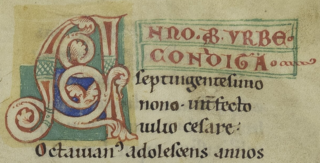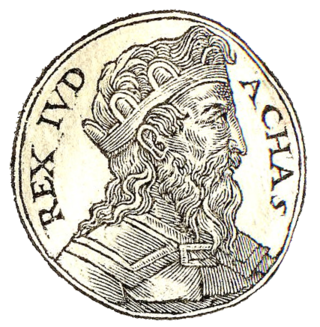Births
| | This section is empty. You can help by adding to it. (June 2021) |
| Millennium: | 1st millennium BC |
|---|---|
| Centuries: | |
| Decades: | |
| Years: |
| 716 BC by topic |
| Politics |
|---|
| Categories |
| Gregorian calendar | 716 BC DCCXVI BC |
| Ab urbe condita | 38 |
| Ancient Egypt era | XXV dynasty, 37 |
| - Pharaoh | Shabaka, 6 |
| Ancient Greek era | 16th Olympiad (victor )¹ |
| Assyrian calendar | 4035 |
| Balinese saka calendar | N/A |
| Bengali calendar | −1308 |
| Berber calendar | 235 |
| Buddhist calendar | −171 |
| Burmese calendar | −1353 |
| Byzantine calendar | 4793–4794 |
| Chinese calendar | 甲子年 (Wood Rat) 1982 or 1775 — to — 乙丑年 (Wood Ox) 1983 or 1776 |
| Coptic calendar | −999 – −998 |
| Discordian calendar | 451 |
| Ethiopian calendar | −723 – −722 |
| Hebrew calendar | 3045–3046 |
| Hindu calendars | |
| - Vikram Samvat | −659 – −658 |
| - Shaka Samvat | N/A |
| - Kali Yuga | 2385–2386 |
| Holocene calendar | 9285 |
| Iranian calendar | 1337 BP – 1336 BP |
| Islamic calendar | 1378 BH – 1377 BH |
| Javanese calendar | N/A |
| Julian calendar | N/A |
| Korean calendar | 1618 |
| Minguo calendar | 2627 before ROC 民前2627年 |
| Nanakshahi calendar | −2183 |
| Thai solar calendar | −173 – −172 |
| Tibetan calendar | 阳木鼠年 (male Wood-Rat) −589 or −970 or −1742 — to — 阴木牛年 (female Wood-Ox) −588 or −969 or −1741 |
The year 716 BC was a year of the pre-Julian Roman calendar. In the Roman Empire, it was known as year 38 Ab urbe condita . The denomination 716 BC for this year has been used since the early medieval period, when the Anno Domini calendar era became the prevalent method in Europe for naming years.
| | This section is empty. You can help by adding to it. (June 2021) |

Ab urbe condita, or anno urbis conditae, abbreviated as AUC or AVC, expresses a date in years since 753 BC, the traditional founding of Rome. It is an expression used in antiquity and by classical historians to refer to a given year in Ancient Rome. In reference to the traditional year of the foundation of Rome, the year 1 BC would be written AUC 753, whereas AD 1 would be AUC 754. The foundation of the Roman Empire in 27 BC would be AUC 727. The current year AD 2024 would be AUC 2777.
The Julian calendar is a solar calendar of 365 days in every year with an additional leap day every fourth year. The Julian calendar is still used as a religious calendar in parts of the Eastern Orthodox Church and in parts of Oriental Orthodoxy as well as by the Amazigh people.

The Roman calendar was the calendar used by the Roman Kingdom and Roman Republic. Although the term is primarily used for Rome's pre-Julian calendars, it is often used inclusively of the Julian calendar established by the reforms of the Dictator Julius Caesar and Emperor Augustus in the late 1st century BC.
AD 1 (I) or 1 CE was a common year starting on Saturday or Sunday, a common year starting on Saturday by the proleptic Julian calendar, and a common year starting on Monday by the proleptic Gregorian calendar. It is the epoch year for the Anno Domini (AD) Christian calendar era, and the 1st year of the 1st century and 1st millennium of the Christian or Common Era (CE).
The year 715 BC was a year of the pre-Julian Roman calendar. In the Roman Empire, it was known as year 39 Ab urbe condita. The denomination 715 BC for this year has been used since the early medieval period, when the Anno Domini calendar era became the prevalent method in Europe for naming years.
The proleptic Julian calendar is produced by extending the Julian calendar backwards to dates preceding AD 8 when the quadrennial leap year stabilized. The leap years that were actually observed between the implementation of the Julian calendar in 45 BC and AD 8 were erratic.

The Ides of March is the day on the Roman calendar marked as the Idus, roughly the midpoint of a month, of Martius, corresponding to 15 March on the Gregorian calendar. It was marked by several major religious observances. In 44 BC, it became notorious as the date of the assassination of Julius Caesar, which made the Ides of March a turning point in Roman history.
The 8th century BC started the first day of 800 BC and ended the last day of 701 BC. The 8th century BC was a period of great change for several historically significant civilizations. In Egypt, the 23rd and 24th dynasties lead to rule from Kingdom of Kush in the 25th Dynasty. The Neo-Assyrian Empire reaches the peak of its power, conquering the Kingdom of Israel as well as nearby countries.
In chronology and periodization, an epoch or reference epoch is an instant in time chosen as the origin of a particular calendar era. The "epoch" serves as a reference point from which time is measured.
This article concerns the period 719 BC – 710 BC.
Year 46 BC was the last year of the pre-Julian Roman calendar. At the time, it was known as the Year of the Consulship of Caesar and Lepidus. The denomination 46 BC for this year has been used since the early medieval period, when the Anno Domini calendar era became the prevalent method in Europe for naming years.
Year 38 BC was either a common year starting on Sunday or Monday or a leap year starting on Saturday, Sunday or Monday of the Julian calendar and a common year starting on Sunday of the Proleptic Julian calendar. At the time, it was known as the Year of the Consulship of Pulcher and Flaccus. The denomination 38 BC for this year has been used since the early medieval period, when the Anno Domini calendar era became the prevalent method in Europe for naming years. It was also the first year of the Spanish era calendar in use in Hispania until the 15th century.

Ahaz an abbreviation of Jehoahaz II, "Yahweh has held" was the twelfth king of Judah, and the son and successor of Jotham. Ahaz was 20 when he became king of Judah and reigned for 16 years.
The year 717 BC was a year of the pre-Julian Roman calendar. In the Roman Empire, it was known as year 37 Ab urbe condita. The denomination 717 BC for this year has been used since the early medieval period, when the Anno Domini calendar era became the prevalent method in Europe for naming years.
A calendar era is the period of time elapsed since one epoch of a calendar and, if it exists, before the next one. For example, it is the year 2024 as per the Gregorian calendar, which numbers its years in the Western Christian era.

The Parilia or Palilia was an ancient Roman festival of rural character performed annually on 21 April, aimed at cleansing both sheep and shepherd. It was carried out in acknowledgment to the Roman deity Pales, a deity of uncertain gender who was a patron of shepherds and sheep.

The Kings of Judah were the monarchs who ruled over the ancient Kingdom of Judah, which was formed in about 930 BC, according to the Hebrew Bible, when the United Kingdom of Israel split, with the people of the northern Kingdom of Israel rejecting Rehoboam as their monarch, leaving him as solely the King of Judah.
The Holocene calendar, also known as the Holocene Era or Human Era (HE), is a year numbering system that adds exactly 10,000 years to the currently dominant numbering scheme, placing its first year near the beginning of the Holocene geological epoch and the Neolithic Revolution, when humans shifted from a hunter-gatherer lifestyle to agriculture and fixed settlements. The current year by the Gregorian calendar, AD 2024, is 12024 HE in the Holocene calendar. The HE scheme was first proposed by Cesare Emiliani in 1993, though similar proposals to start a new calendar at the same date had been put forward decades earlier.
A year zero does not exist in the Anno Domini (AD) calendar year system commonly used to number years in the Gregorian calendar ; in this system, the year 1 BC is followed directly by year AD 1. However, there is a year zero in both the astronomical year numbering system, and the ISO 8601:2004 system, the interchange standard for all calendar numbering systems. There is also a year zero in most Buddhist and Hindu calendars.
The Gregorian calendar is the calendar used in most parts of the world. It went into effect in October 1582 following the papal bull Inter gravissimas issued by Pope Gregory XIII, which introduced it as a modification of, and replacement for, the Julian calendar. The principal change was to space leap years differently so as to make the average calendar year 365.2425 days long, more closely approximating the 365.2422-day 'tropical' or 'solar' year that is determined by the Earth's revolution around the Sun.